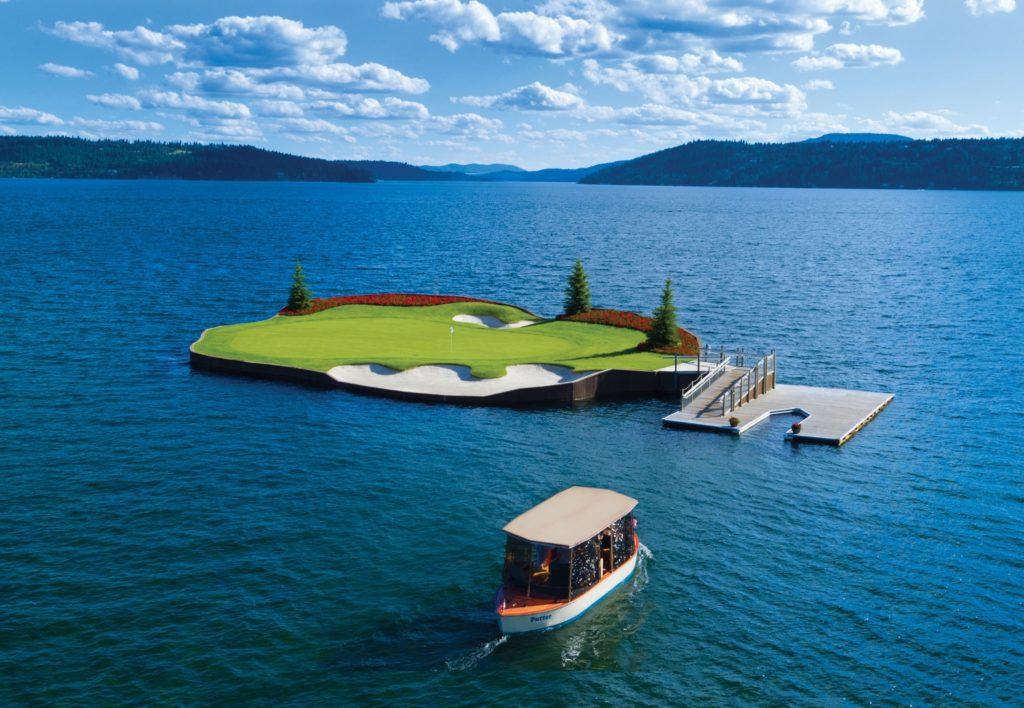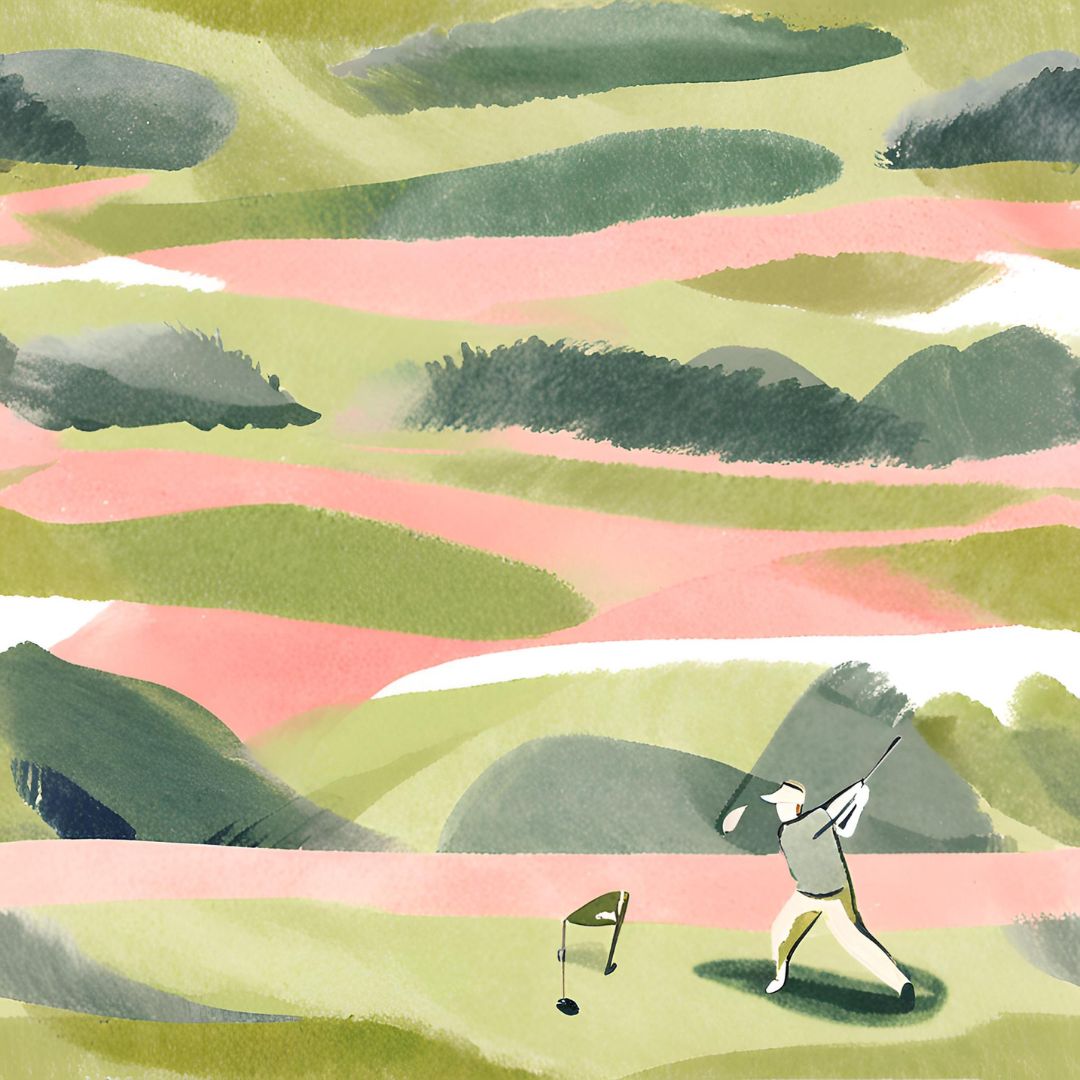In recent years, golf simulators have become increasingly popular, providing golfers with a convenient and engaging way to practice and play the game year-round. The high-tech systems like the ones we use here at OGP, incorporate advanced tracking sensors and detailed 3D course recreations to offer an immersive golf experience indoors.

While golf simulators undoubtedly offer numerous benefits, such as instant feedback, weather-independent play, and the ability to sample courses from around the world, the question remains – how does the simulator experience compare to playing on an actual golf course? I have you covered. As a recently graduated collegiate golfer, I had the opportunity to play a number of beautiful courses in the United States-many of which are playable on our simulator. There is one course in particular that I had the pleasure of playing a number of times-enough times that I can confidently say I can sufficiently compare the simulator version to the real deal. This course is Coeur D’Alene Golf Course, located in Coeur D’Alene, Idaho. The stunning course is, in my opinion, a must play. It is far away though, so for now, let me tell you how close you can get to playing the real thing from right here at OGP.
In this blog post, we’ll take a deep dive into the simulator vs. reality comparison hole-by-hole, looking at just how accurate our technology is in comparison to the IRL golf course. I used one of my old yardage books to compare, and I promise to be as honest as possible!
Let’s begin.
Hole-By-Hole
The first hole is a dog-leg right, and as the hole-by hole on the website states, the fairway is forgiving, and for those looking to go for the green in two, a right center tee shot is preferred to take the trees on the left out of play. A lay up left is a safe play, but the green is reachable, both in real life and on the simulator. From what I recall, there is a somewhat steep slope down off the right side of the green, which isn’t as visible or in play on the simulator (this makes it easier to score here though). The slopes of the green are accurate to the green book.
Hole 2 is a test to say the least. It is definitely easier to play on the simulator in comparison to the real thing, where the long, slight dog-leg right par 4 demands accuracy in order to be set up for a good second shot. Yesterday I hit my drive slightly left, and while I would’ve been struggling on my approach in real life, I was easily able to hit it from the rough on the sim. The slight false front is less pronounced digitally, but definitely still comes into play, and the big green slopes fairly accurately.
The third hole is a slightly daunting one to look at, both in person and on the simulator, and from what I can remember, it plays almost exactly the same in both circumstances. Aiming right allows the ball to kick well off the slope and roll close to the hole. The biggest simulator benefit here in my opinion, is the fact that you don’t need to hike up the humongous hill after you finish out the hole.
Hole 4 again, plays almost exactly the same as it does in real life. You have to lay-up off the tee into a good position in order to be able to attack the pin. The approach is said to play 6-7 yards up in my book and on the sim alike-so if you’re worried about slope accuracy indoors, don’t be.
Hole 5 and 6 are both par threes-and extremely interesting ones at that. One thing I will say about these two holes is that you do need to see them, and the sim doesn’t quite give you the same view as what you would have in person. Hole 5 is home to a clover-shaped, three-tiered green that is surrounded by one of the world’s largest bunkers, and a number of rust-toned rock outcroppings. Each prong of the green is very narrow. In real life, aiming at the middle every single time is the right play, but on the sim it seems much less daunting to fire one right at the pin. I guess it helps that you’re automatically lined up straight! The tiers in the green definitely come into play as they would in real life, so keep that in mind.
Hole 6 plays extremely downhill-18 yards down on the sim, and 20 yards down in my yardage book. The ball rolls a fair amount off the back in both cases. There are steep slopes on the left and the right and they do come into play in both the digital and real versions of the golf course.
Holes 7 is pretty straightforward, the bunkers are less in play on the digital version, but the overall look of the hole is set up really nicely and very similar to the real thing. Same with hole 8. There is a tree in the middle of the fairway that comes into play as much as it would in real life. I’ve hit straight into it in both cases, and trust me, the ball bounces off those branches the same way.
Hole 9, 10, 11, and 12, are fairly straightforward and similar to the real deal-maybe a touch easier to play. 13 is an interesting one. Depending on tees you can go for the green off the tee, but honestly, I think this hole plays harder on the simulator than it does in real life. The sim makes the water off the left seem more daunting than it is, and for some reason it’s just tricky to hit a straight tee shot. Wind also comes into play digitally, but because you can’t feel it, it’s tricky to remember to take it into account-beware of this when you play any sim courses!
14 is the course’s signature hole. One of only two island greens to exist, this one is a sight to see. Though you get a good look digitally, you don’t get to take the boat up to the green as you do in real life. In terms of golf alone though, the hole plays accurately.
15 is a short par 5, easy to reach but hard to putt on since the green is about 35 yards long, and narrow. The drive and approach shots are accurate, and the greenside bunkers prove a challenge. 16 is a classic hole, not much to it.
17 plays very different in real life to the simulator. It is extremely short, and very drivable off the tee on the simulator. In real life there is a thick tree line on both sides that make accuracy very necessary. These are not present in the digital version, making it easy to just bomb one down there.
Last but not least, the 18th hole. This one is a bunker-filled challenge both digitally and in real life. The simulator pin placement is placed far back in the corner of the green, making it really difficult to approach the hole. The green is sloped and this is reflected, and the giant bunker is very hard to hit out of despite not having real sand on the mats.
So, Indoor or Outdoor?
There is no right answer to this question-both have benefits and drawbacks. Overall, the simulator tends to downplay the severity of certain hazards like deep bunkers, steep slopes, and dramatic elevation changes that are more pronounced on the actual golf course. So holes with these types of features see the biggest differences between the virtual and real-world experience. Courses like this one are played much for the untouchable experiences they provide, but honestly, if you’re just looking to see an accurate depiction of a course and play some golf without the constraints of travel, time and weather, then it’s perfect! I will admit, it is also much easier to score indoors because you don’t have to hit out of funky lies like bunkers or thick rough.
Generally, I highly recommend coming down to play some courses on our simulators. Chambers Bay, Pebble Beach and Torrey Pines are a few others I’ve played in real life and on the sim, and it’s lovely to see the comparisons and even just to “see the course” on the screen. We have an awesome selection here at OGP-so seriously, come and try them out!
Call or WhatsApp us to book a bay now!






